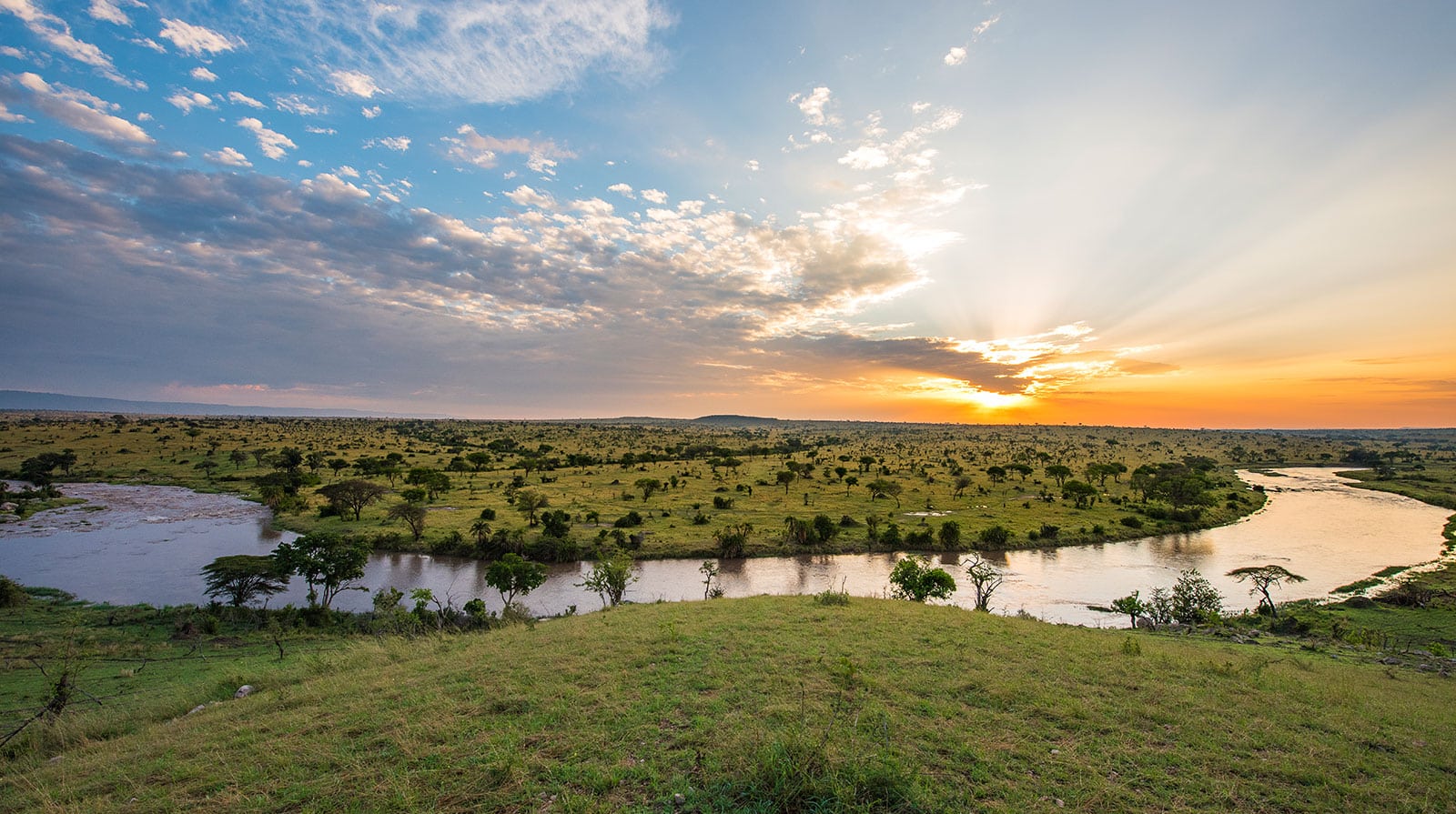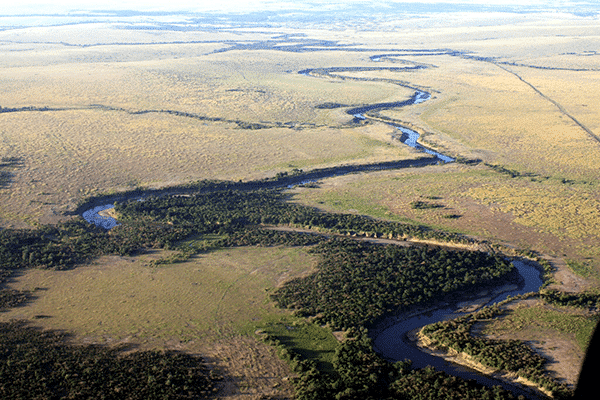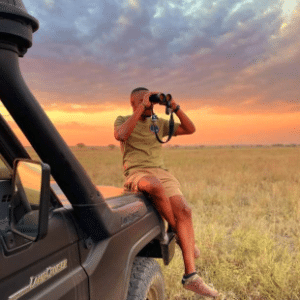The Serengeti Mara River: A Lifeline for Wildlife and Communities
The Serengeti Mara River, flowing through the heart of East Africa, is more than just a natural waterway—it is a vital ecological artery that sustains the iconic wildlife and ecosystems of the Masai Mara-Serengeti region. Stretching across the border of Kenya and Tanzania, the Mara River is an integral part of the Great Migration, supporting a diverse range of species and providing critical resources for local communities. In this article, we will explore the significance of the Serengeti Mara River, its biodiversity, and the ongoing conservation efforts to protect this irreplaceable natural wonder.

The Origin and Geography of the Serengeti Mara River
The Mara River begins its journey in the Mau Escarpment in Narok County, Kenya, and flows approximately 395 kilometers through both Kenya and Tanzania. The river’s path meanders across a variety of landscapes, including vast savannas, forests, and rolling hills. Its journey ends at Lake Victoria, one of the largest freshwater lakes in the world. This route offers breathtaking views and plays an essential role in shaping the landscape and ecosystem of the region.
The river is divided into several sections, each with unique features, from fast-moving rapids to slow meanders. Along its route, the Mara River passes through some of Africa’s most famous game reserves, including the Masai Mara National Reserve in Kenya and the Serengeti National Park in Tanzania. This area is renowned for its wildlife, particularly during the annual migration of wildebeests and zebras.

Flora and Fauna Along the Banks: A Haven for Wildlife
The Serengeti Mara River’s banks are teeming with life, making it a hotspot for wildlife enthusiasts. The river is particularly famous for being a central feature of the Great Migration, one of the world’s most spectacular wildlife events. Every year, millions of wildebeests and zebras traverse the river in search of greener pastures, a dangerous and thrilling journey as they encounter predators like lions, hyenas, and crocodiles.
The Great Migration: The Mara River plays a pivotal role in the Great Migration, which sees millions of herbivores crossing it during their seasonal trek from the Masai Mara in Kenya to the Serengeti in Tanzania. These crossings are dramatic and often perilous, as wildebeests and zebras must navigate the swift currents and the waiting jaws of crocodiles. It is a breathtaking display of survival, drawing countless visitors and wildlife photographers to the area each year.
Biodiversity Hotspot: The river’s surroundings are home to an astonishing variety of species. The lush vegetation along its banks supports numerous bird species, including the African fish eagle and the great white egret. The river itself is also a sanctuary for various fish species, including tilapia and catfish. These ecosystems create an intricate food web, with predators like crocodiles and large cats benefiting from the abundance of prey animals. Birdwatchers, photographers, and nature lovers flock to this area to experience its diverse wildlife firsthand.

The Mara River’s Ecosystem Services: Vital for Both Wildlife and Humans
The Serengeti Mara River is not only crucial for the region’s wildlife but also for the people living along its banks. The river provides essential water for drinking, agriculture, and sustenance. The fertile floodplains support local farming communities who rely on its waters for irrigation, cultivating crops like maize, beans, and vegetables. For these communities, the Mara River is a lifeline, sustaining both their livelihoods and their cultural heritage.
Regulating the Local Climate: The dense vegetation along the river’s path helps regulate the local climate. The surrounding forests and wetlands act as carbon sinks, absorbing carbon dioxide and mitigating climate change. Additionally, the river helps to moderate local temperatures, providing a more favorable environment for both humans and wildlife. As temperatures rise globally, the health of the Mara River’s ecosystem becomes even more critical to the sustainability of the region.
Conservation Efforts: Protecting the Mara River
The Serengeti Mara River’s importance cannot be overstated, and various organizations and governments in Kenya and Tanzania are working to ensure its continued health. Conservation initiatives focus on preserving the delicate balance of the river’s ecosystem, protecting both its flora and fauna.
Anti-Poaching Efforts: Poaching remains one of the greatest threats to wildlife in the region, particularly to iconic species like elephants and rhinos. Anti-poaching patrols and increased law enforcement efforts are vital to maintaining the health of the Mara River’s surrounding ecosystems.
Sustainable Tourism: Tourism plays a significant role in the region’s economy, but it must be managed sustainably to minimize negative impacts on the environment. Many safari operators are committed to responsible tourism practices, ensuring that visitors contribute positively to conservation efforts while enjoying the natural beauty of the Mara River and its wildlife.
Reforestation Projects: Deforestation along the riverbanks has led to soil erosion and degradation of habitats. Reforestation programs aim to restore these critical areas, helping to stabilize the river’s ecosystem and protect biodiversity.
How to Get to the Serengeti Mara River
For those eager to witness the awe-inspiring spectacle of the Great Migration or simply to experience the beauty of the Mara River, there are several ways to access the river.
By Air: The easiest and most convenient way to reach the Mara River is by flying into one of the nearby airstrips in the Serengeti National Park. The Seronera Airstrip is one of the main entry points, with flights available from major cities in Tanzania, including Dar es Salaam, Arusha, Zanzibar, and Kilimanjaro.
By Road: If you prefer to take the scenic route, a road trip from Arusha to the Serengeti offers a unique safari experience. The journey takes about eight hours, passing through the Ngorongoro Conservation Area, a UNESCO World Heritage site. Visitors can stop here to rest before continuing to the Mara River.

Threats to the Mara River
Despite its importance, the Mara River faces several threats. Pollution from agricultural runoff and settlements, habitat destruction, and the increasing impacts of climate change put the river’s delicate ecosystems at risk. These challenges must be addressed to ensure that the Mara River continues to support both wildlife and human populations in the future.
Pollution and Habitat Destruction: Overdevelopment and unregulated agricultural practices are leading to pollution and habitat loss along the river. These activities compromise the quality of water and degrade essential habitats for wildlife.
Climate Change: The Mara River, like many other natural resources, is increasingly affected by climate change. Shifts in rainfall patterns and rising temperatures threaten to alter the river’s flow and the biodiversity it supports.
Conclusion: The Serengeti Mara River’s Enduring Legacy
The Serengeti Mara River is not only a physical lifeline for the ecosystems it supports but also a symbol of the intricate relationship between wildlife and natural resources. From the incredible drama of the Great Migration to the river’s essential role in sustaining human communities, the Mara River is a cornerstone of life in East Africa.
Ongoing conservation efforts and sustainable practices are crucial to preserving this unique natural wonder. As visitors explore the Mara River, they are not only witnessing the grandeur of nature but also becoming part of a global effort to protect this vital waterway for future generations.
Explore the Serengeti Mara River and Witness Nature’s Wonders
Ready to embark on an unforgettable safari experience? Contact a trusted Tanzania travel expert and plan your visit to the Serengeti Mara River today!
Travel Packages Available:
- Tanzania Day Tours
- Luxury Safaris
- Honeymoon Safaris
- Family Safaris
- Photographic Safaris
- Serengeti Safari
- Zanzibar Beach Holidays
- Mount Kilimanjaro Trekking
Email: info@gie.co.tz | www.gie.co.tz
Explore, discover, and protect one of the world’s greatest natural wonders!
